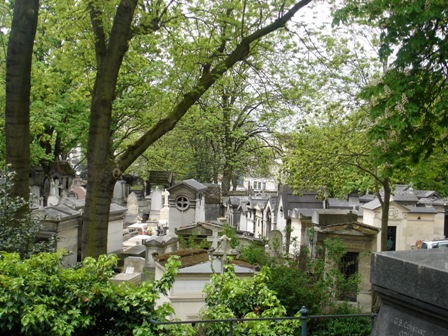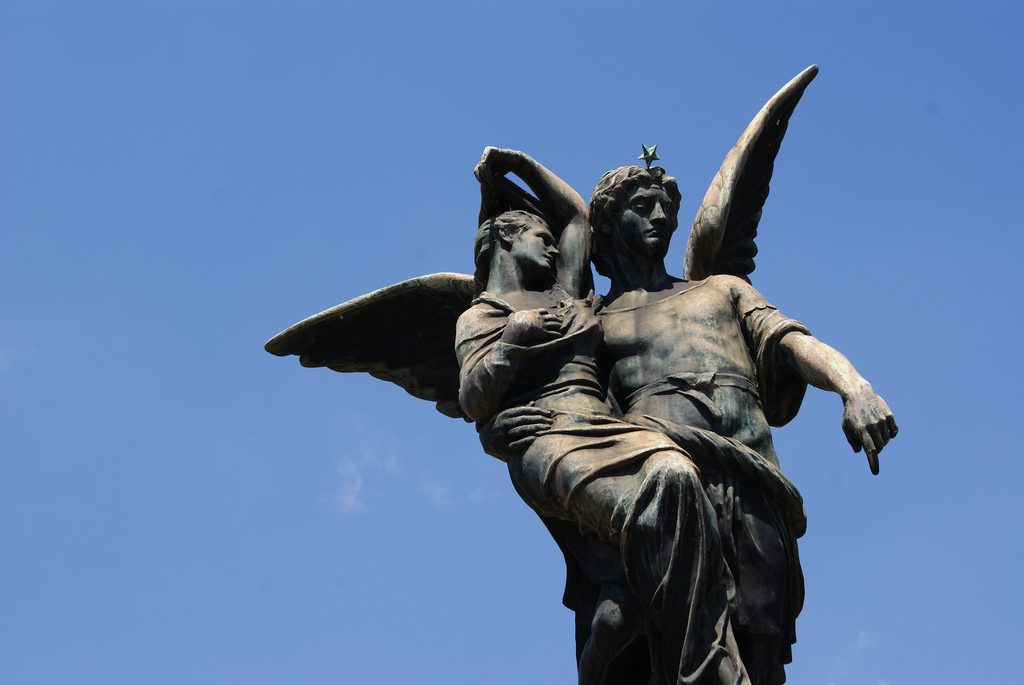THIS versus THAT: Cemetery Showdown
Some may find it strange to visit a cemetery while on vacation. However, cemeteries can often times help convey centuries of history, literature, politics and art. In particular, Père-Lachaise Cemetery in Paris and Recoleta Cemetery in Buenos Aires are two fantastic examples of cemeteries that are attractions in themselves. The tragic stories, beauty and solemn peace found amongst the tombstones is simply to die for!
Paris
Situated in the 20th Arrondisement of Paris, the Père-Lachaise Cemetery is a veritable who’s who of French and international writers, musicians, politicians and the wealthy elite. Built in 1802 and stretching across 110 acres of north-eastern Paris, the cemetery was actually not a very popular with many Parisians who preferred to buried closer to the city center. All that changed in 1804 when Molière and La Fontaine’s remains were transferred here, giving the grounds much needed prestige. Previously, Moliere’s remains had rested in a cemetery that was reserved for unbaptized babies due to the fact that at the time of his death, actors were not given proper burials. Molière’s move to Père-Lachaise over 125 years after his death definitely cemented his position amongst France’s literary heroes. Over the next 200 years the cemetery became the final resting place for many of France’s beloved artists, including Chopin, Balzac, Pissaro, Edith Piaf, Proust and Yves Montand. Interestingly enough, two of the most visited graves at Père-Lachaise do not belong to Frenchmen, but rather an American and a Brit. Jim Morrison’s grave is by far one of the most visited graves in the cemetery. . . and it is also the one that attracts the most graffiti and vandalism.
There always seems to be a group of fans looking over his grave which is a shrine to the late singer and poet, adorned with candles, sad little flowers, various little trinkets visitors leave behind and countless cigarette butts. Oscar Wilde’s grave is famously covered with lipstick kisses from admiring visitors. The exiled poet may have met an untimely death in a fleabag Left Bank hotel, but his remains rest among the most celebrated names in 19th and 20th-century literature.
Indeed, there are so many famous names buried in this cemetery, a map is necessary to find any particular grave. Even if you are not looking for anyone specific, strolling the luxuriously wide paths lined with trees can be a delightful and peaceful way to pass the time. On sunny spring and summer days, the cemetery is quite inviting, so much so that you may even forget what is buried beneath. It’s on cloudy, rainy days that the cemetery becomes quite desolate and gloomy and even statues of angels take on a rather dark, sinister look. That’s when the cemetery receives the least amount of visitors; you may find yourself wandering for hours without seeing a single (living) soul. Careful not to lose your way; rows and rows of tombstones, statues and mausoleums can all start to look the same after a while.
Buenos Aires
On the other side of the globe in a chic and beautiful Buenos Aires neighborhood lies Recoleta Cemetery, final resting place for the porteño elite. At first glance, Recoleta Cemetery resembles Père-Lachaise quite a bit. It was built in 1822, only 20 years after the construction and insurgent popularity of the Paris cemetery. Buenos Aires itself is even referred to as the “Paris of the South.” In fact, even the architecture of the upscale Recoleta neighborhood is modeled after the iconic Haussmann-style buildings of Paris. The brilliant white neo-classical columns and “Requiescant in Pace” in gold lettering at the entrance are just a hint of what can be found behind the black wrought iron gates. In much the same way as Père-Lachaise, paths are arranged like streets with plenty of greenery abound. Unlike Père-Lachaise, which is at the edge of town, Recoleta is situated in the most desirable neighborhood in the city and shares the vicinity with luxury apartment buildings, expensive restaurants and fashionable boutiques. While real estate in the area comes at a premium price, it does not begin to compare with the exclusivity of Recoleta Cemetry. Walking amongst the graves, you’ll notice that many of the names of the souls buried here are also the names of the grand avenues of Buenos Aires: Pueyrrédon, LaValle, Mitre and Sarmiento, just to name a few.
Amongst the ex-presidents, celebrated writers, military heroes and the extremely wealthy you can find the final resting place of the beloved Evita Perrón, buried under her maiden name, Eva Duarte. Evita’s family mausoleum is a rather conservative looking structure made of black and gray granite and marble, decorated with various bronze plaques and bunches of flowers still wrapped in cellophane. This does not compare to the other elaborate and ostentatious mausoleums that can be found on the premises. Busts, angels, stone flowers, Greek columns, statues of saints and stained glass are just a few of the more popular architectural features prevalent throughout the cemetery. Indeed, those who lived lavishly certainly did not hesitate to die lavishly, even glamorously.
So…
In terms of physical beauty, Recoleta certainly wins over Père-Lachaise. However, Recoleta is not quite as well-maintained; pathways are cracked, and when it rains, you can’t walk two steps without encountering a puddle. On the other hand, the location of Père-Lachaise at the edge of town makes it a bit inconvenient for visitors as opposed to the prime location of Recoleta in Buenos Aires. In terms of star power, Père-Lachaise does indeed draw more visitors with a long and incredibly impressive list of permanent residents. While there are various reasons to visit each cemetery, winner this round is Père-Lachaise.
THIS vs THAT Winner: Père-Lachaise
Written by Alba de Santiago



